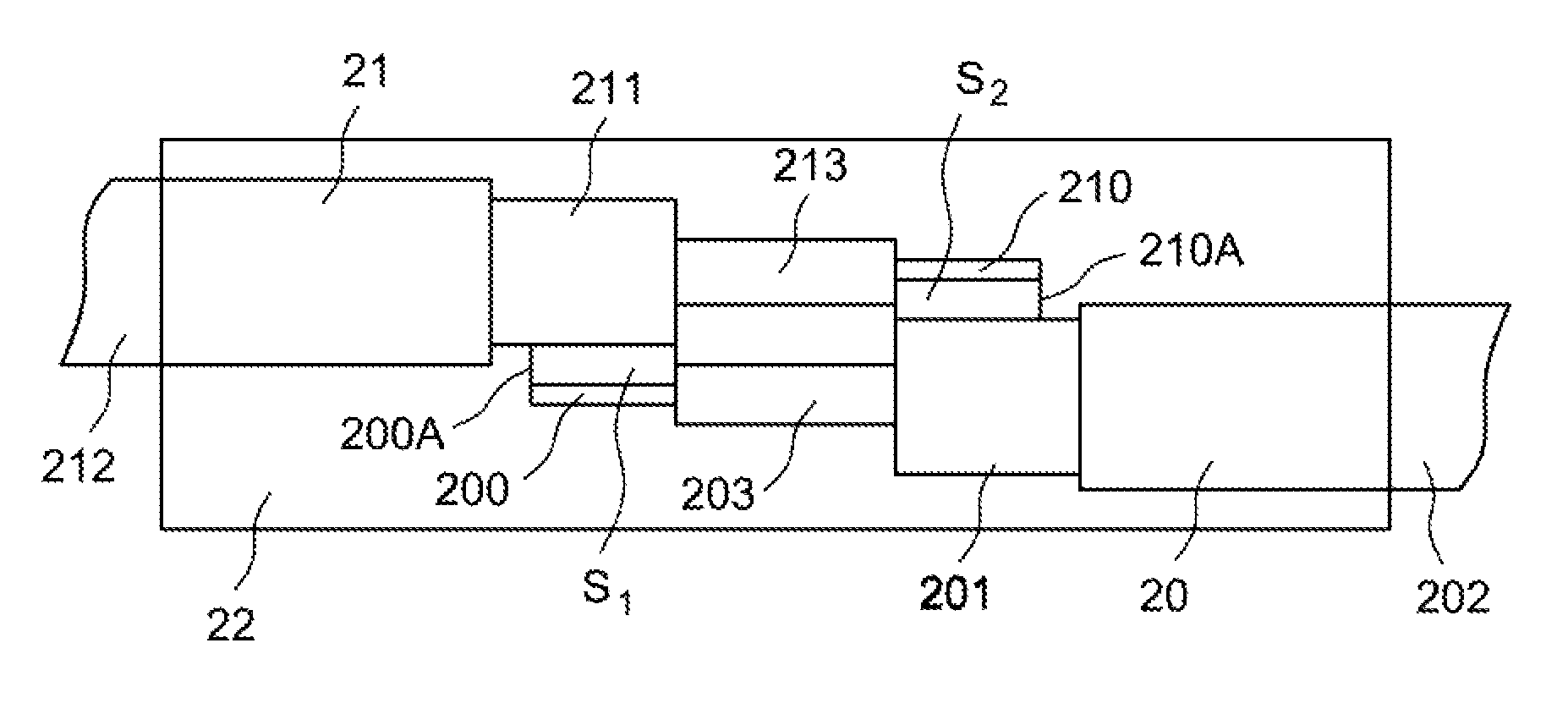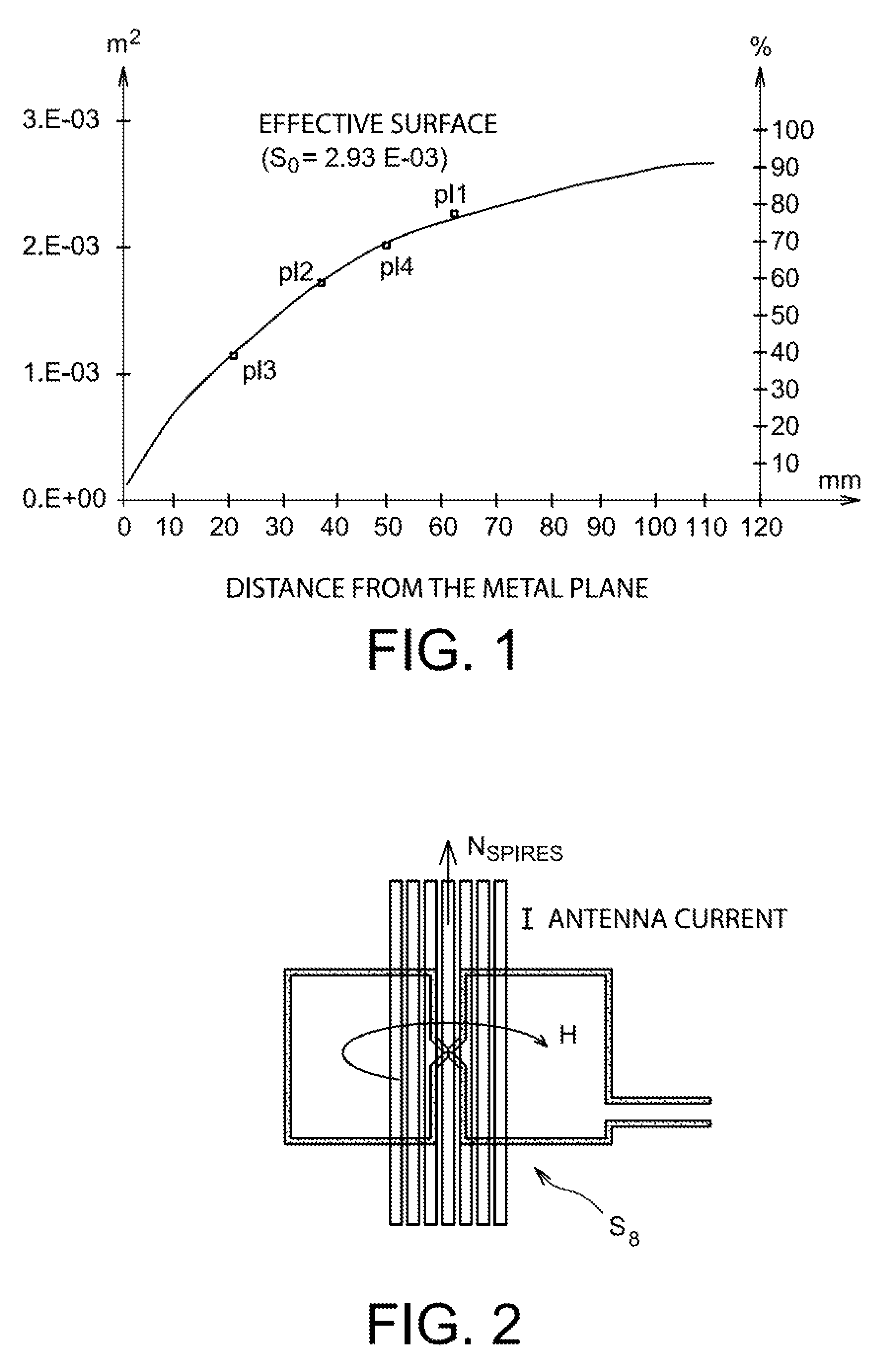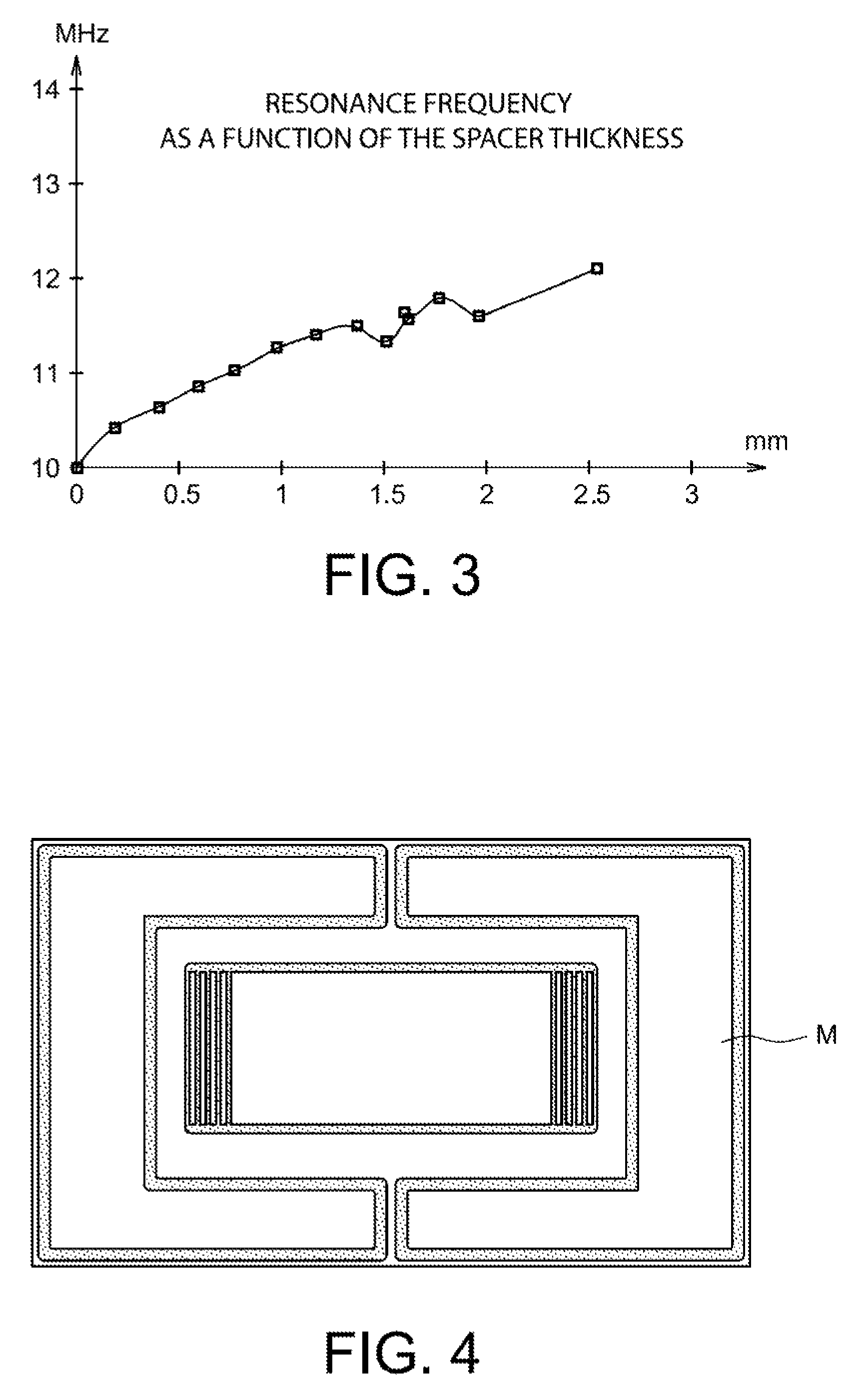Device having reduced overall dimensions for identifying a metal substrate in a dusty and metallic environment, and application for identifying containers containing nuclear fuel elements in the production plant thereof
a metal substrate and overall dimension technology, applied in the direction of instruments, nuclear engineering, electromagnetic radiation sensing, etc., can solve the problems of reducing the legibility of the bar code, not giving the entire satisfaction of the device, and reducing the overall dimension of the devi
- Summary
- Abstract
- Description
- Claims
- Application Information
AI Technical Summary
Benefits of technology
Problems solved by technology
Method used
Image
Examples
first embodiment
[0019]To do this, according to the invention, a device is provided for identifying a metal substrate present in a strongly metallic environment that may also be dusty, comprising a passive radio-frequency identification (RFID) label, a label carrier comprising a ferrite element suitable for being attached to the metal substrate and to position the label at a distance therefrom comprising a short-circuit looping laid out inside the circuit looping of the label antenna, and an RFID reader having an antenna that includes, as induction loop, two sections of coaxial cable having a substantially identical length and each including a metal core and a metal pleat surrounding the core, the two sections being linked together on the one hand at one end thereof by connecting the core of one to the pleat of the other and conversely and, on the other hand, at the other end thereof by connecting only the pleats together, the cores thereof being separated at said other end.
second embodiment
[0020]According to the invention, a device is provided for identifying a metal substrate present in a strongly metallic environment that may also be dusty, comprising a radiofrequency identification (RFID) label, a label carrier made of electrically insulating material suitable for being attached to the metal substrate and to position the label at a distance therefrom and comprising a housing suitable for completely housing the label, and an RFID reader, the antenna of which is constituted of two sections of coaxial cable having a substantially identical length and each including a metal core and a metal pleat surrounding the core, the two sections being linked together on the one hand at one end thereof by connecting the core of one to the pleat of the other and conversely and, on the other hand, at the other end thereof by connecting only the pleats together, the cores thereof being separated at said other end.
[0021]Within the scope of the invention, the environment is called “hig...
PUM
 Login to View More
Login to View More Abstract
Description
Claims
Application Information
 Login to View More
Login to View More - R&D
- Intellectual Property
- Life Sciences
- Materials
- Tech Scout
- Unparalleled Data Quality
- Higher Quality Content
- 60% Fewer Hallucinations
Browse by: Latest US Patents, China's latest patents, Technical Efficacy Thesaurus, Application Domain, Technology Topic, Popular Technical Reports.
© 2025 PatSnap. All rights reserved.Legal|Privacy policy|Modern Slavery Act Transparency Statement|Sitemap|About US| Contact US: help@patsnap.com



